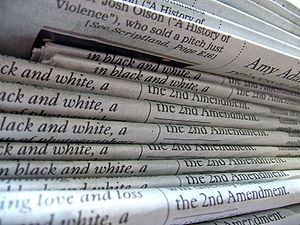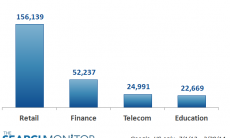When I started working at Page One Power as a fresh faced link builder, one of the first terms that caught my ear like a poor cast was the term “above the fold.” I was familiar with the term from my journalism courses in which above the fold was a literal term for what appeared on the top of the front page of a newspaper. This would be the biggest story of the day that would be eye grabbing in hopes of selling more papers. So Al Gore (or maybe it was Sirgey Brin) decided that things at the top of a web page are of more importance than items lower down, and this has been a topic of debate ever since. So, in a digital environment where exactly is the fold?

Good question! I was told that above the fold refers to the content that is on the screen when a page loads. This is true, but it’s also confusing: the iMac I use at work has much, MUCH, better resolution than my personal laptop back home. This means that more content can be shown on the iMac than my laptop, which means that more content appears above the fold while I’m at work. As a link builder, I was told to shoot for links above the fold (more on that later), but how could I do that if the fold constantly changes between users? Well it turns out that there isn’t a designated line at so many pixels or something like that precisely because of the disparity between devices. The fold, as far as I can figure out (and feel free to prove me wrong in the comments below), is actually determined by where the advertisements are placed on a page – but this was abused, which led to a Google algorithm update.
The Fold Rush
This led to advertisers paying a premium for ad space located high on the page, which in turn led to webmasters increasing the ad space available high on a page to get more profits. Well, this created millions of sites that required the user to go searching for the actual content because it was buried under a heap of ads, and users weren’t happy. Google is great at fighting spam, and they attacked this annoying practice by penalizing pages in their Page Layout Algorithm and balance has been restored. Being high on a page is still “better” because it tells Google’s algorithm that that content is worth noticing to a user, which means you need to be conscious of what you’re featuring on your pages.
Climbing Above the Fold
Rand Fishkin is the yellow-shoed SEO guru and has done studies that suggest that links, not ads, pass more or less “link juice” depending on where a link is located. For me, and other link builders, getting a link high on a page passes the most value even though the “above the fold” terminology usually applies to advertisements.
Not to Throw a Wrench in the Works…
But once you get away from ad revenue or link juice many people are claiming that items below the fold have a much higher rate of conversion. If you find this to be the case for your content, it probably means your content is of high quality, because your readers are scrolling down to see more. Once they scroll down and finish reading your stellar content, they are much more likely to sign up for a mailing list, share the post on social media, comment, or even make a purchase. Experiment around with where you place your widgets and other items that you can track, and see if you see any noticeable increase when items are below the fold.
What have been your experiences when changing layout and where do you see the biggest impact?





